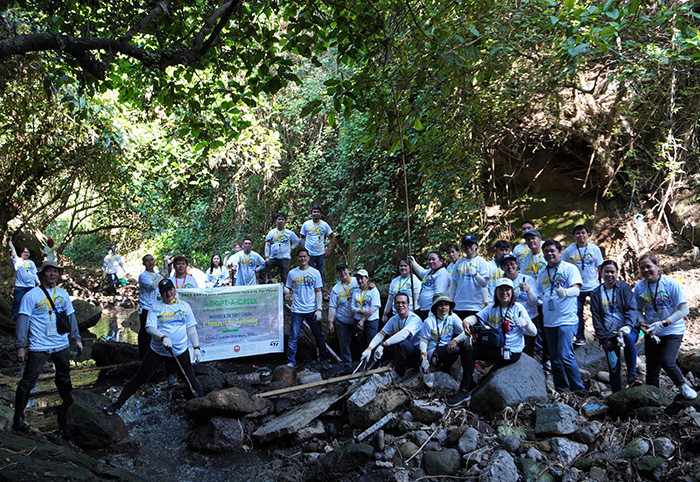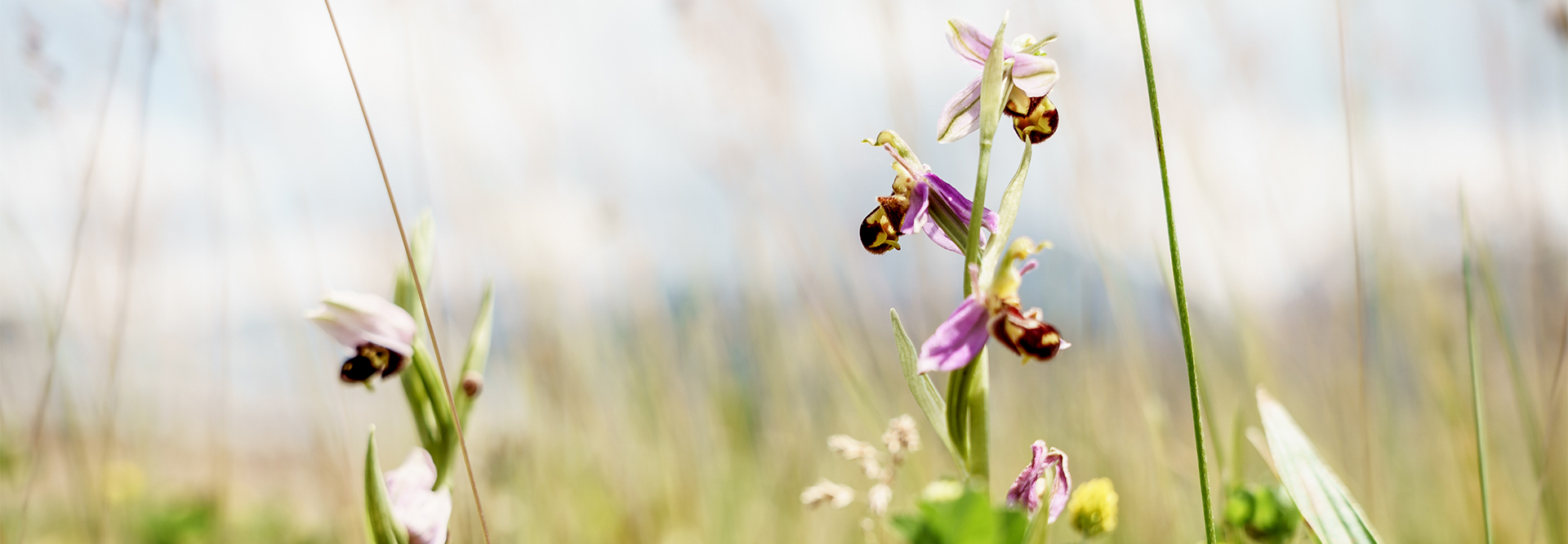Biodiversity
We take a proactive approach to protecting biodiversity in the areas in which we operate.
2023
new evaluation methodology
10
biodiversity scoring criteria
16
ST sites assessed
Loss of biodiversity is a pressing global issue. Natural ecosystems are becoming increasingly disrupted, which poses a direct threat to humanity. This disruption can be attributed to several factors, including the impact of industrial activity. It is therefore critical for major organizations like ST to support the UN Sustainable Development Goals 14 (conserving and sustainably using the oceans, seas, and marine resources) and 15 (conserving life on land) and embed global biodiversity objectives into their strategies.
At ST, we maintain a vigilant and proactive approach to protecting the environment and we recognize the need for concrete actions to help preserve and restore biodiversity.
Understanding biodiversity impacts
During 2022 and 2023, we undertook several initiatives to gain insights into our actual and potential impacts on biodiversity. These included a biodiversity survey at 22 of our sites to help us understand our impacts and assess the actions we have already taken. We also commissioned a specialist study from an external partner on the biodiversity ecosystems close to our sites and operations to gain a better understanding of the local environment. These investigations informed the development of our corporate biodiversity strategy.
Our approach is centered on three key pillars that help to define our biodiversity roadmap:
- minimizing our impact
- protecting and restoring
- engaging local stakeholders
From assessment to action
In 2023, we developed a new method to evaluate the status and progress of biodiversity issues at our sites based on the results of our assessments.
Each site has a biodiversity scorecard based on 10 criteria. These criteria have been selected to respond to SMART (specific, measurable, achievable, relevant, and time-bound) objectives and measure both quantitative and qualitative factors.
- governance and strategy
- risks and opportunities
- water
- air
- soil
- natural state
- forest
- flora
- fauna
- external partnerships
This broad range of criteria reflects the diverse locations of our sites and enables them to assess not only their maturity but also the impact of their initiatives so change can be implemented where necessary. Each criterion is scored on a scale of 0 to 2, with 2 being the highest score indicating the best performance. The final visual representation of the scores illustrates the interdependencies between the criteria. So far, 16 sites, including manufacturing and R&D facilities, have completed the scorecard. This has enabled them to produce and analyze their results, giving them a final score in our biodiversity index. This method enables tracking of progress at site level as well as evaluation of ST as a whole.
In future, sites will be evaluated bi-annually using both estimated and actual data, allowing them to keep track of their progress and improve their index score. This methodology will help sites identify areas for improvement and tailor their actions according to their needs and context. 3-3
Adapting to the local environment
As an industry-leading manufacturer with operations across the globe, it is important we adapt to the local environments in which we operate.
To achieve this, our sites implement a range of local initiatives appropriate to their surroundings and their biodiversity scorecard. External partnerships with local associations and non-profit organizations are a critical element of these activities, enabling sites to increase their impact through collaboration.
In 2023, our Tours site (France) developed a biodiversity strategy in line with the criteria of its biodiversity scorecard. The strategy was tailored to the local environment and took into account issues such as climate change expectations, vegetation, and native species, as well as rainwater management. The site has also formed a partnership with the city of Tours to help restore biodiversity in the local area.

Betsabée Haas
Deputy Mayor in charge of nature and biodiversity, Tours (France)
In 2023, we joined forces with STMicroelectronics to work towards rewilding a natural green space in northern Tours, France. Strong commitment and collaboration between our organizations made it possible to establish a hands-on program to plant species and restore local biodiversity. Employees had the opportunity to participate in the program, which helped to raise awareness and understanding of biodiversity matters related to the site and the local environment.
Our Greater Noida site (India) planted a forest using the ‘Miyawaki method’, following a flora and fauna assessment and taking into account biodiversity criteria, natural state. The project involved planting around 1,200 native species of trees.
The Miyawaki method is a tree planting model for creating forests quickly on land that has previously been used for other purposes, such as agriculture or construction. After two years, the forest becomes self-sufficient and provides an effective home for birds and insects, while reducing air pollution.
Our Grenoble site (France) collaborated with a number of local organizations to help improve natural habitats around the site. This included raising awareness through signage, improving the natural environment by removing wildlife hazards, installing nest boxes, and limiting light pollution. In 2023, the site was awarded LPO designation from the Ligue pour La Protection des Oiseaux, a French NGO dedicated to the protection of birds.
FOCUS

Contributing to local restoration
Our Calamba site (the Philippines) is located close to a biodiversity hotspot and protected area. In 2023, the site launched a program called ‘Adopt-a-creek’ to help restore a 500-meter stretch of Baranca de Sipit Creek in Calamba city. The initiative aims to restore balance to the local ecosystem through a variety of studies and activities.
The project began with a comprehensive baseline water analysis, which examined specific parameters including oxygen demand, total suspended solids, and coliform bacteria levels. The program was then officially launched on Earth Day in April 2023. It was celebrated with a clean-up activity that involved 101 volunteers, including ST employees, contractors, local agency officials, and a consultant. The volunteers removed over 100 bags of rubbish that had been polluting the creek and harming local ecosystems.
The program team held quarterly meetings with the Department of Environment and Natural Resources to discuss compliance, project implementation, and strategy and achievements. The success of the program inspired another local organization to adopt a nearby 600-meter stretch of the creek, further expanding restoration efforts in the area.
The Adopt-a-creek program is ongoing, with ST planning a range of activities to continue improving the area until 2027. These include tree planting, educational campaigns, seasonal water analyses, and third-party clean-up activities.
Looking forward
As our corporate biodiversity program develops, we plan to adapt the biodiversity index to meet the specific requirements of our R&D sites. This will enable us to gain a comprehensive understanding of our operations. We will also conduct further flora and fauna assessments with specialists to better understand if there are protected species in the vicinity of our sites. By increasing internal and external collaboration, we aim to ensure that each site has its own customized plan to help protect and restore biodiversity.


